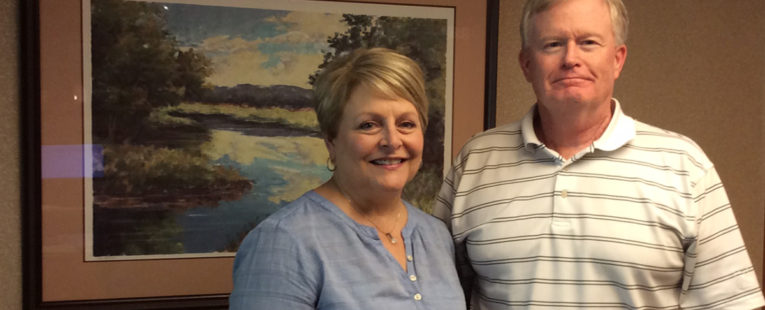It was an aneurysm in a coiled carotid left artery that brought Tim Dorr to OSF HealthCare Saint Anthony Medical Center. “I feel lucky – because the aneurysm was discovered by accident,” says Dorr. “It could have burst and I would have been a goner.”
When experiencing symptoms before the aneurysm was discovered – headache and a partially paralyzed tongue – Dorr says friends were trying to convince him to seek treatment out of town. “I had three OSF doctors standing here on most days talking about these issue with me,” Dorr says. “I am so pleased with my care and I can say OSF Saint Anthony Medical Center is equivalent, or better, than even the most prestigious hospitals.”
It’s a distinction that OSF HealthCare Saint Anthony Medical Center has earned through investments in expertise, technology and experience as a Level 1 Trauma Center. Now, with the creation of its neurological intervention program, including a $3 million investment in a new surgical intervention procedure room, we have strengthened our capabilities, and have demonstrated our commitment to being the region’s number one hospital for stroke care.
OSF Saint Anthony sees the most number of stroke patients in the northern Illinois region and is the only hospital recognized with a Gold Plus award for Stroke Care by both the American Heart and American Stroke Associations. As a stroke care leader in the region, OSF Saint Anthony committed a significant investment to a surgical intervention program because the benefits to patients were too important to ignore.
“The benefit to the family and the cost savings to our society are tremendous,” said Dr. Harneet Bath, Vice President Chief Medical Officer at OSF Saint Anthony. “
Reducing death risk
Treating stroke or brain aneurysm patients with surgical intervention reduces their chance of dying or being permanently impaired by about 35 percent, as compared to conventional therapy alone.
“The hallmark of treating vascular disease is treating them rapidly, especially ischemic stroke, says OSF neuro-interventionist physician,” Dr. Ayman Gheith. “OSF HealthCare Saint Anthony Medical Center is on par with any major university or any major city medical program.”
Dr. Gheith and Dr. Akram Shhadeh lead the neurological intervention team at the medical center. With a combined 20 years of experience, the physicians use a state-of-the-art machine to perform minimally invasive surgeries to treat brain and neck vascular disorders.
Open 24/7/365, the neuro intervention procedure room can be a game changer for patients like Dorr. “Even 10 years ago most of these conditions were not able to be treated safely,” says Gheith. “We are light years ahead in respect to the technology now available and that has translated into significantly improved outcomes for our patients.”
Dr. Gheith, however, points out quick action by the patient when symptoms appear is a key factor for a more successful outcome. “If the face is droopy on one side, if one of the arms is weak, if their speech is garbled, slurred, or you can’t understand them – it’s time to call 9-1-1.”
It’s advice that’s not lost on Dorr. The 63-year old delayed getting fully checked out by several days. “Listen to your body, don’t give up on it because it’s macho to ignore it,” says Dorr. Especially at my age – you’ve got to get on top of this stuff.”
Last Updated: January 22, 2021
